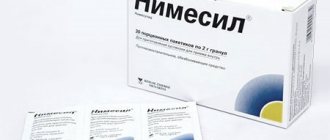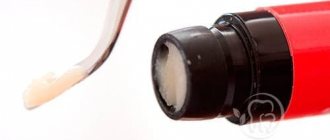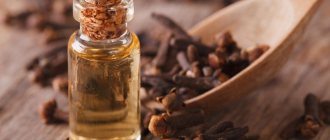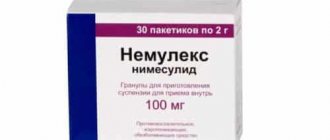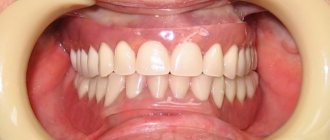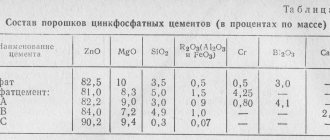Release form, composition
The drug Nimesil is available in a dosage form, a powder for the preparation of a suspension, which is intended for oral administration. It has a light green color, coarse grain, and an orange scent. The main active component of the drug is nimesulide, its content in 1 sachet of powder is 100 mg. The drug also contains additional compounds, which include:
- Sucrose.
- Orange flavor.
- Ketomacrogol.
- Anhydrous citric acid.
- Maltodextrin.
Nimesil powder is packaged in aluminum foil bags of 2 g each. A cardboard pack contains 9, 15 or 30 bags.
Comparison of ease of use of Nimesil and Nimulid
This includes dose selection taking into account various conditions and frequency of doses. At the same time, it is important not to forget about the release form of the drug; it is also important to take it into account when making an assessment.
The ease of use of Nimesil is approximately the same as Nimulid. However, they are not convenient enough to use.
The drug ratings were compiled by experienced pharmacists who studied international research. The report is generated automatically.
Last update date: 2020-12-04 13:44:25
pharmachologic effect
The main active ingredient of Nimesil is nimesulide, which is a sulfonamide. This substance suppresses the activity of cyclooxygenase-2 in the body, the enzyme responsible for the production of prostaglandins, which are synthesized during the development of pathological processes. A decrease in the amount of synthesized prostaglandins, as a result of exposure to nimeslin, helps to reduce irritation of nerve endings in the area of inflammation, which, in turn, leads to the disappearance of pain.
After entering the body, the drug begins to act actively. It is easily absorbed from the stomach and intestines, penetrates the blood, binding to plasma proteins. The largest amount of active substance in the blood is observed approximately 2-3 hours after taking the medicine. The main metabolic processes take place in the liver, and the resulting inactive products are eliminated within 6 hours (half-life).
According to research results, repeated use of the drug does not cause accumulation.
Comparison of the effectiveness of Nimesil and Nimulid
The effectiveness of Nimesil is quite similar to Nimulid - this means that the ability of the drug substance to provide the maximum possible effect is similar.
For example, if the therapeutic effect of Nimesil is more pronounced, then using Nimulid even in large doses will not achieve this effect.
Also, the speed of therapy - an indicator of the speed of therapeutic action - is approximately the same for Nimesil and Nimulid. And bioavailability, that is, the amount of a drug reaching its site of action in the body, is similar. The higher the bioavailability, the less it will be lost during absorption and use by the body.
Indications for use of Nimesil
Nimesil is prescribed for:
- pain syndromes of various origins (headache, dental pain, menstrual pain, consequences of injuries, postoperative pain, pain from rheumatism, etc.);
- infectious and inflammatory diseases (traumatic and postoperative inflammation)
- degerative and inflammatory diseases of the musculoskeletal system (arthritis, osteoarthrosis, osteochondrosis, bursitis, radiculitis, rheumatism, etc.);
- urological, gynecological and vascular diseases;
- diseases accompanied by increased body temperature.
This remedy is appropriate both for long-term treatment therapy and for dulling severe pain syndromes.
Patient reviews
Alla, 35 years old
If pulpitis occurs, the doctor recommended taking Nimesil. He quickly eliminated severe toothache. The next day, when the severe pain had already disappeared, I went to see a dentist to treat a bad tooth.
Sergey Ivanovich, 60 years old
I have been suffering from osteoarthritis of the knee joints for several years. When the disease worsens, severe pain occurs and it becomes impossible to walk. In this case, the doctor advised taking Nemulex. I take the drug according to the instructions prescribed by the doctor. After a few days, the pain subsides.
Contraindications
Before taking the medication, you must eat the contraindications indicated by the manufacturer. In particular, it is prohibited to take it in the following situations:
- Hypersensitivity to the active base (nimesulide) or an auxiliary component of the drug.
- History of hyperergic reactions of the body: rhinitis, urticaria, bronchospasm, laryngospasm associated with taking any drug from the NSAID group, including nimesulide.
- History of hepatotoxic reactions of the body to nimesulide.
- Simultaneous treatment with other drugs that have hepatotoxic effects (especially from the NSAID group).
- Inflammatory processes in the intestines in the acute phase (Crohn's syndrome, nonspecific ulcerative colitis).
- Recovery period after coronary artery bypass surgery.
- Fever that accompanies colds and acute respiratory viral infections.
- A combination of bronchial asthma, polyposis of the paranasal sinuses or nose with a recurrent course and a history of intolerance to NSAIDs;
- Exacerbation of a stomach or duodenal ulcer;
- History of ulcer with bleeding or perforation;
- History of cerebrovascular and other bleeding;
- Diseases accompanied by bleeding;
- Severe bleeding disorder;
- Severe heart failure;
- Severe renal failure;
- Confirmed hyperkalemia;
- Liver disease in the acute phase;
- Liver failure;
- Children under 12 years old;
- Pregnancy, lactation;
- Drug addiction, alcoholism.
Prescribed with caution for the following pathologies and factors:
- heart failure of any degree;
- severe arterial hypertension;
- diabetes mellitus type 2;
- IHD;
- hereditary fructose intolerance;
- malabsorption of glucose-galactose;
- sucrose-isomaltose deficiency;
- dys- or hyperlipidemia;
- cerebrovascular pathologies;
- severe somatic illnesses;
- arterial diseases (peripheral);
- infection caused by Helicobacter pylori;
- creatinine clearance less than 60 ml/min;
- long-term treatment with NSAIDs;
- elderly age;
- smoking.
Nimesil 100mg 2g 30 pcs. granules for preparing a suspension
pharmachologic effect
Nonsteroidal anti-inflammatory drug (NSAID)
Composition and release form Nimesil 100 mg 2 g 30 pcs. granules for preparing a suspension
Granules - 1 pack:
- Active ingredient: nimesulide - 100 mg;
- Excipients: macrogol cetostearyl ether, sucrose, maltodextrin, anhydrous citric acid, orange flavor.
2 g of granules in a three-layer bag [paper/aluminum foil/polyethylene].
9, 15 or 30 sachets with instructions for use of the drug in a cardboard box.
Description of the dosage form
Light yellow granular powder with an orange odor.
Characteristic
Pharmacotherapeutic group: non-steroidal anti-inflammatory drug (NSAID).
Directions for use and doses
Inside. Dissolve the contents of the sachet in a glass of still water (approximately 100 ml), stir with a spoon until a suspension with an orange scent is obtained. The suspension must be consumed immediately after preparation.
Adults and children over 12 years of age: 1 sachet (100 mg of nimesulide) twice a day, after meals.
Elderly patients: when treating elderly patients, there is no need to adjust the daily dose (see section “Pharmacokinetics”).
Use in children
Children aged 12 - 18 years: no dose adjustment is required taking into account the pharmacokinetic and pharmacodynamic characteristics of nimesulide.
Children under 12 years of age: the use of drugs containing nimesulide is contraindicated.
The maximum daily dose for adults and children over 12 years of age is 200 mg.
The maximum duration of treatment with Nimesil® is 15 days.
Patients with kidney failure
In patients with mild to moderate renal failure (creatinine clearance 30-60 ml/min), taking into account pharmacokinetic data, no dose adjustment is required, while in patients with severe renal failure (creatinine clearance
Patients with liver failure
The use of Nimesil® in patients with liver failure is contraindicated.
Side effects of the drug can be minimized by using the lowest effective dose for the minimum period necessary to relieve symptoms.
Pharmacodynamics
Nimesulide belongs to non-steroidal anti-inflammatory drugs (NSAIDs). Has anti-inflammatory, analgesic and antipyretic effects. Unlike non-selective NSAIDs, nimesulide mainly inhibits cyclooxygenase-2 (COX-2), inhibits the synthesis of prostaglandins at the site of inflammation: it has a less pronounced inhibitory effect on cyclooxygenase-1 (COX-1).
Pharmacokinetics
Suction
Nimesulide is well absorbed when taken orally.
The maximum concentration in blood plasma (Cmax) after oral administration of a single dose of nimesulide, amounting to 100 mg in adults, is achieved on average after 2 - 3 hours and is 3-4 mg / l. The area under the concentration-time curve (AUC) is 20-35 mg/h/l. The indicated values and the values of the corresponding indicators obtained while taking nimesulide at a dose of 100 mg once or twice a day for 7 days do not have a statistically significant difference.
Communication with blood plasma proteins - up to 97.5%.
Metabolism and excretion
Nimesulide is actively metabolized in the liver in various ways, incl. with the participation of the cytochrome P450 (CYP) 2C9 isoenzyme. Therefore, in cases of simultaneous use of nimesulide with drugs that are metabolized with the participation of this isoenzyme, the possibility of drug interactions should be taken into account (see section “Interaction with other drugs”). The main metabolite is the pharmacologically active parahydroxy derivative of nimesulide. This metabolite is detected in the blood plasma a short time after taking the drug (approximately 0.8 hours), but the rate constant for its formation is low (significantly lower than the absorption rate constant of nimesulide). Hydroxynimesulide is the only metabolite found in blood plasma. This metabolite is almost completely present in bound form.
The half-life (T1/2) is 3.2 - 6 hours.
Nimesulide is excreted from the body mainly by the kidneys (about 50% of the dose taken; while 1 - 3% of nimesulide is excreted unchanged). Approximately 29% of the amount taken is excreted in metabolized form through the intestines. The pharmacokinetic profile of nimesulide in elderly people does not change when using single and repeated doses.
In a short-term study conducted in patients with mild to moderate renal failure (creatinine clearance 30-80 ml/min) and healthy volunteers, Cmax of nimesulide and its main metabolite in blood plasma was no higher than in healthy volunteers. The values of AUC and half-life (T1/2) in patients with renal failure were 50% higher, but were always within the range of pharmacokinetic parameters observed in healthy volunteers during the use of nimesulide. Repeated use did not lead to the accumulation of nimesulide. Nimesulide is contraindicated in patients with liver failure (see section "Contraindications").
Indications for use Nimesil 100 mg 2 g 30 pcs. granules for preparing a suspension
- Acute pain (including pain in the back, lower back; pain in the musculoskeletal system, including bruises, sprains and dislocations of joints; tendinitis, bursitis; toothache);
- symptomatic treatment of osteoarthritis (osteoarthritis) with pain syndrome;
- primary algodismenorrhea.
The drug is intended for symptomatic therapy, reducing pain and inflammation at the time of use. Nimesulide should be used as a second-line drug. The decision to prescribe nimesulide should be made based on a risk assessment for each patient.
Contraindications
- Hypersensitivity to nimesulide or other components of the drug;
- history of hyperergic reactions (bronchospasm, rhinitis, urticaria) associated with the use of acetylsalicylic acid (ASA) or other NSAIDs;
- complete or incomplete combination of bronchial asthma, recurrent polyposis of the nose or paranasal sinuses with intolerance to ASA and other NSAIDs (including a history);
- history of hepatotoxic reactions to nimesulide;
- simultaneous use with other drugs with potential hepatotoxicity (for example, other NSAIDs);
- chronic inflammatory bowel diseases (Crohn's disease, ulcerative colitis) in the acute phase;
- period after coronary artery bypass surgery;
- fever and/or presence of flu-like symptoms;
- peptic ulcer of the stomach or duodenum in the acute phase; erosive and ulcerative lesions of the gastrointestinal tract in the acute phase; history of erosive and ulcerative lesions of the gastrointestinal tract; history of perforation or gastrointestinal bleeding, including those associated with previous NSAID therapy;
- cerebrovascular bleeding or other active bleeding, or diseases accompanied by increased bleeding;
- severe blood clotting disorders;
- severe heart failure;
- severe renal failure (creatinine clearance
- confirmed hyperkalemia;
- liver failure or any active liver disease;
- children under 12 years of age;
- pregnancy and breastfeeding;
- alcoholism, drug addiction;
- hereditary fructose intolerance, sucrase-isomaltase deficiency and glucose-galactose malabsorption syndrome.
Arterial hypertension, diabetes mellitus, compensated heart failure, coronary heart disease, cerebrovascular diseases, dyslipidemia/hyperlipidemia, peripheral arterial disease, smoking, renal failure (creatinine clearance 30-60 ml/min).
History of Helicobacter pylori infection; elderly age; long-term previous use of NSAIDs; severe somatic diseases.
Concomitant use with the following drugs: anticoagulants (for example, warfarin), antiplatelet agents (for example, ASA, clopidogrel), oral glucocorticosteroids (for example, prednisolone), selective serotonin reuptake inhibitors (for example, citalopram, fluoxetine, paroxetine, sertraline).
Application of Nimesil 100 mg 2 g 30 pcs. granules for the preparation of a suspension during pregnancy and lactation
The use of nimesulide during pregnancy and breastfeeding is contraindicated.
Suppression of prostaglandin synthesis may adversely affect pregnancy and/or embryonic and fetal development. The results of epidemiological studies indicate that drugs that suppress the synthesis of prostaglandins, used in the early stages of pregnancy, can increase the risk of spontaneous abortion, as well as the development of heart disease and cleft of the anterior abdominal wall in the fetus; Thus, the absolute risk of developing cardiovascular abnormalities increased from approximately less than 1% to 1.5%. The risk is believed to increase with increasing dose and duration of use.
In the third trimester of pregnancy, all inhibitors of prostaglandin synthesis can lead to the development of cardiopulmonary pathology in the fetus (premature closure of the ductus arteriosus and hypertension in the pulmonary artery system) and renal dysfunction, which can progress and lead to renal failure with the development of oligohydramnios. In addition, even when used in low doses, in the mother at the end of pregnancy and in the newborn, an increase in bleeding time is possible, associated with the antiplatelet effect, as well as suppression of uterine contractility, leading to a delay in labor or prolonged labor in the mother. There is no information about the penetration of nimesulide into breast milk.
Preparations containing nimesulide, like other NSAIDs, are not recommended for use by women planning pregnancy (see section “Special instructions”). In women who have problems conceiving or undergoing examination due to infertility, the possibility of discontinuing Nimesil® should be considered.
special instructions
Undesirable side effects can be minimized when using the drug in the minimum effective dose with the minimum duration of use necessary to relieve symptoms (see section “Dosage and Administration” and subsections “Effect on the gastrointestinal tract”, “Effect on the cardiovascular system" - below).
In the absence of positive dynamics, treatment with the drug should be discontinued.
The simultaneous use of nimesulide with other NSAIDs, including selective COX-2 inhibitors, should be avoided.
While using Nimesil®, patients should refrain from taking other analgesics.
The drug Nimesil® contains sucrose (0.15-0.18 XE per 100 mg of the drug), this should be taken into account in patients with diabetes mellitus. This drug is contraindicated in patients with hereditary diseases: fructose intolerance, glucose-galactose malabsorption or sucrase-isomaltase deficiency.
Effect on the liver
There are reports of serious liver reactions, including, in very rare cases, fatal, associated with the use of nimesulide (see section "Side effects").
If patients develop symptoms similar to those of liver damage while using Nimesil® (for example, anorexia, nausea, vomiting, abdominal pain, fatigue, dark urine) or abnormal liver function tests, use of the drug should be discontinued. Repeated use of nimesulide in such patients is contraindicated. There are reports of liver damage, in most cases reversible with short-term use of the drug. If patients develop flu or cold symptoms while using nimesulide, treatment with the drug should be discontinued.
Effect on the gastrointestinal tract
There are reports of gastrointestinal bleeding, ulcers or perforations (in some cases life-threatening) during the use of any NSAIDs at different stages of treatment, both with and without the appearance of warning symptoms, and regardless of the presence of serious history of gastrointestinal complications.
The risk of gastrointestinal bleeding, ulceration or perforation increases with increasing doses of NSAIDs, in patients with a history of ulcers, especially complicated by bleeding or perforation (see section "Contraindications"), as well as in elderly patients. For patients who are simultaneously taking low-dose ASA or other drugs that increase the risk of gastrointestinal disorders, combination therapy with protective drugs, such as proton pump inhibitors, should be considered (see section “Interactions with other drugs”). .
Patients with a history of toxic lesions of the gastrointestinal tract, especially elderly patients, should report to the doctor the occurrence of any unusual gastrointestinal symptoms (in particular, gastrointestinal bleeding), especially in the initial stages of treatment. Gastrointestinal bleeding, ulcers, and ulcer perforation can develop at any stage of treatment, both with and without the appearance of warning symptoms, and regardless of the presence or absence of gastrointestinal pathology in the anamnesis. If gastrointestinal bleeding or ulcers develop while using nimesulide, the drug should be discontinued. The use of nimesulide is contraindicated in patients with gastrointestinal diseases, including ulcerative colitis and Crohn's disease (see section "Contraindications").
Patients concomitantly taking medications that may increase the risk of ulceration or bleeding: oral corticosteroids, anticoagulants (for example, warfarin), selective serotonin reuptake inhibitors or antiplatelet agents (for example, ASA), the drug should be used with caution (see section "Interaction with other medicines"). If gastrointestinal bleeding or ulcers occur in patients receiving nimesulide, treatment with the drug should be discontinued.
Elderly patients
In elderly patients, the use of NSAIDs may increase the incidence of side effects, especially gastrointestinal bleeding and ulcer perforation (in some cases life-threatening), as well as impaired renal, liver and cardiac function (see section "Side effect"). In this regard, appropriate monitoring is recommended.
Skin reactions
Very rarely, serious skin reactions have been reported with the use of NSAIDs, including exfoliative dermatitis, Stevens-Johnson syndrome, and toxic epidermal necrolysis, some of which were fatal (see section "Side effects"). The risk of developing such reactions in patients appears to be highest at the beginning of treatment, because Most of the described phenomena were observed in the first month of therapy. At the first appearance of a skin rash, damage to the mucous membranes or any other signs of hypersensitivity, the use of nimesulide should be discontinued.
Effect on the kidneys
The drug should be used with caution in patients with renal or heart failure, since the use of Nimesil® may lead to deterioration of renal function. In this case, treatment should be stopped.
Effect on fertility
The use of Nimesil® may have a negative effect on reproductive function in women, and therefore the drug is not recommended for use in women planning pregnancy. The possibility of discontinuing Nimesil® should be considered in women who have problems conceiving or are undergoing examination for infertility (see section “Use during pregnancy and breastfeeding”).
Effect on the cardiovascular and cerebrovascular systems
Patients with a history of mild to moderate hypertension and/or congestive heart failure require medical supervision and advice, as there have been reports of fluid retention and the development of edema with the use of NSAIDs.
Clinical studies and epidemiological data suggest that NSAIDs, especially in high doses and with long-term use, may lead to a slight increase in the risk of arterial thrombosis (for example, myocardial infarction or stroke). There is insufficient data to exclude such a risk when using nimesulide.
In patients with uncontrolled arterial hypertension, congestive heart failure, diagnosed coronary artery disease, peripheral arterial disease and/or cerebrovascular pathology, nimesulide should be prescribed after a thorough assessment of the condition of these patients. An equally thorough assessment of the condition should be carried out before starting long-term treatment in patients with risk factors for the development of cardiovascular diseases (for example, hypertension, hyperlipidemia, diabetes mellitus, smoking).
Due to the fact that nimesulide can suppress platelet function, it should be used with caution in patients with hemorrhagic diathesis (see section “Contraindications”). However, the drug Nimesil® cannot be used for the prevention of cardiovascular diseases instead of ASA.
Impact on the ability to drive vehicles and operate machinery
The effect of the drug Nimesil® on the ability to drive vehicles and machines has not been studied. Despite this, patients who experience a feeling of stupefaction, dizziness or drowsiness after taking Nimesil® should refrain from driving vehicles and machinery.
Storage conditions
Store at a temperature not exceeding 25° C.
Keep out of the reach of children!
Overdose
Symptoms: acute overdose of NSAIDs is usually limited to the following symptoms, usually reversible with maintenance therapy: apathy, drowsiness, nausea, vomiting, epigastric pain. Gastrointestinal bleeding may develop. In rare cases, it is possible to increase blood pressure, develop acute renal failure, respiratory depression and coma. There are reports of the development of anaphylactoid reactions during the use of NSAIDs in therapeutic doses; their occurrence is also possible in case of overdose. Treatment: in case of NSAID overdose, patients should be provided with symptomatic and supportive therapy. There is no specific antidote. There is no data regarding the possibility of removing nimesulide by hemodialysis, however, given the high degree of binding to plasma proteins (up to 97.5%), it can be assumed that in case of an overdose of the drug, dialysis is ineffective. If there are symptoms of an overdose or after taking the drug in large quantities, within 4 hours after administration, it is necessary to induce vomiting and/or take activated charcoal (60 to 100 g for an adult) and/or an osmotic laxative. Forced diuresis, urine alkalinization, hemodialysis or hemoperfusion may be ineffective due to the high level of drug binding to blood proteins. It is necessary to monitor kidney and liver function.
Side effects Nimesil 100mg 2g 30 pcs. granules for preparing a suspension
Side effects identified in controlled clinical trials* (about 7800 patients) and post-marketing studies are listed below according to the WHO classification in descending frequency of occurrence: very often (≥1/10), often (≥1/100,
Clinical studies and epidemiological data suggest that the use of some NSAIDs, especially in high doses and for long periods of time, may be associated with a slight increase in the risk of arterial thrombosis (for example, myocardial infarction or stroke) (see section "Special Instructions").
There are reports of the development of edema, increased blood pressure and the development of heart failure during the use of NSAIDs. Bullous reactions, including Stevens-Johnson syndrome and toxic epidermal necrolysis, have been reported in very rare cases. The most commonly observed adverse events are from the gastrointestinal tract. The development of peptic ulcers, perforation or gastrointestinal bleeding is possible, in some cases life-threatening, especially in elderly patients (see section "Special instructions"). According to available data, when using drugs containing nimesulide, nausea, vomiting, diarrhea, flatulence, constipation, dyspepsia, abdominal pain, melena, hematemesis, ulcerative stomatitis, exacerbation of colitis and Crohn's disease may occur (see section "Special instructions" "). Gastritis was observed less frequently.
Blood and lymphatic system disorders
Rarely: anemia*, eosinophilia*; Very rare: thrombocytopenia, pancytopenia, thrombocytopenic purpura.
Immune system disorders
Rare: hypersensitivity reactions*; Very rare: anaphylactoid reactions.
Metabolic and nutritional disorders
Rarely: hyperkalemia*.
Mental disorders
Rarely: feeling of fear*, nervousness*, nightly “nightmare” dreams.
Nervous system disorders
Uncommon: dizziness*, feeling dazed; Very rare: headache, drowsiness, encephalopathy (Reye's syndrome).
Visual disorders
Rarely: blurred vision*; Very rare: visual impairment.
Hearing and labyrinth disorders
Very rare: vertigo.
Cardiac disorders Rare: tachycardia*.
Vascular disorders
Uncommon: increased blood pressure*; Rarely: hemorrhages*, lability of blood pressure, “flushes” of blood to the facial skin.
Respiratory, thoracic and mediastinal disorders
Uncommon: shortness of breath*; Very rare: asthma, bronchospasm.
Gastrointestinal disorders
Common: diarrhea*, nausea*, vomiting*; Uncommon: constipation*, flatulence*, gastrointestinal bleeding, ulcer and/or perforation of the stomach or duodenum; Very rare: gastritis*, abdominal pain, dyspepsia, stomatitis, tarry stools.
Disorders of the liver and biliary tract
Often: increased levels of liver enzymes*; Very rare: hepatitis, fulminant hepatitis (including deaths), jaundice, cholestasis.
Skin and subcutaneous tissue disorders
Uncommon: skin itching*, skin rash*, increased sweating; Rarely: erythema*, dermatitis*; Very rare: urticaria, angioedema, facial edema, erythema multiforme, Stevens-Johnson syndrome, toxic epidermal necrolysis.
Renal and urinary system disorders
Rarely: dysuria*, hematuria*; Very rare: urinary retention*, renal failure, oliguria, interstitial nephritis.
General violations
Uncommon: edema*; Rarely: malaise*, asthenia*; Very rare: hypothermia.
*Frequency is based on the results of clinical studies.
To monitor the balance of benefit and risk when using a drug, it is necessary to report the occurrence of side effects. If you experience the side effects described above, or if they occur to a more severe degree, or if you notice any other side effects, please notify your doctor immediately. Health care professionals should report adverse events through the national pharmacovigilance system.
Drug interactions
Pharmacodynamic interaction
Other non-steroidal anti-inflammatory drugs
Concomitant use of drugs containing nimesulide with other NSAIDs. including ASA (in doses ≥ 1 g per dose or ≥ 3 g per day as an anti-inflammatory agent), not recommended {see. section "Special instructions").
Anticoagulants
NSAIDs may enhance the effect of anticoagulants such as warfarin (see section "Special Instructions"). Patients taking warfarin, similar anticoagulants or ASA simultaneously with nimesulide have an increased risk of bleeding, and therefore this combination is not recommended. This combination is contraindicated in patients with severe coagulation disorders (see section "Contraindications"). If combination therapy cannot be avoided, careful monitoring of blood clotting parameters is necessary.
Antiplatelet agents and selective serotonin reuptake inhibitors (SSRIs) increase the risk of gastrointestinal bleeding (see section "Special Instructions").
Corticosteroids may increase the risk of gastrointestinal ulcers or gastrointestinal bleeding.
Diuretics, angiotensin-converting enzyme (ACE) inhibitors, angiotensin II receptor antagonists
NSAIDs may weaken the effect of diuretics and other antihypertensive drugs. In some patients with reduced renal function (for example, dehydrated patients or elderly patients with insufficient renal function), concomitant use of ACE inhibitors and COX inhibitors may further worsen renal function, including the occurrence of acute renal failure, which is usually reversible.
The possibility of such an interaction should be considered in patients taking drugs containing nimesulide together with ACE inhibitors or angiotensin II receptor antagonists.
Therefore, the simultaneous use of these drugs should be used with caution, especially in elderly patients. Patients should receive sufficient fluids; the need to monitor renal function after starting combination therapy and during treatment (periodically) should be considered.
Mifepristone
There is a theoretical risk that the effectiveness of mifepristone may be altered by prostaglandin synthetase inhibitors. Limited data suggest that concomitant use of mifepristone with an NSAID on the day of prostaglandin administration does not adversely affect the effects of mifepristone or prostaglandin on cervical ripening or uterine contractility and does not reduce the clinical efficacy of medical abortion agents.
Pharmacokinetic interaction: the effect of nimesulide on the pharmacokinetics of other drugs
Furosemide
In healthy volunteers, nimesulide reduced the diuretic effect and caused a reversible decrease in sodium excretion under the influence of furosemide and, to a lesser extent, potassium excretion. The simultaneous use of nimesulide and furosemide leads to a decrease (about 20%) in AUC and a decrease in the cumulative excretion of furosemide, without changing the renal clearance of furosemide. The simultaneous use of drugs containing furosemide and nimesulide requires caution in “sensitive” patients with renal or heart failure (see section Special instructions).
Lithium
There are reports that NSAIDs reduce the clearance of lithium, which leads to increased plasma lithium concentrations and toxicity. When using nimesulide in patients undergoing lithium therapy, the concentration of lithium in the blood plasma should be regularly monitored.
No clinically significant interactions were observed with glibenclamide, theophylline, digoxin, cimetidine and antacid drugs (for example, a combination of aluminum and magnesium hydroxides).
Nimesulide inhibits the activity of the CYP2C9 isoenzyme. The plasma concentration of drugs that are substrates of this enzyme may increase when used simultaneously with nimesulide.
When using nimesulide less than 24 hours before or after using methotrexate, caution is required, since in such cases the concentration of methotrexate in the blood plasma and, accordingly, the toxic effects may increase.
Due to their effect on renal prostaglandins, prostaglandin synthetase inhibitors, which include nimesulide, may increase the nephrotoxicity of cyclosporines.
Side effects
Before using the medication, it is extremely important to familiarize yourself with the list of possible side effects provided by the manufacturer:
- increased potassium levels in the blood;
- mild general weakness, decreased body temperature;
- anemia, thrombocytopenia;
- problems with urination, development of kidney failure;
- sweating, skin rashes of various types, dermatitis, erythema, nephrotic edema;
- disturbances in the normal functioning of the liver (in particular, the synthesis of certain enzymes);
- headache and dizziness, causeless anxiety, apathy, drowsiness;
- visual impairment;
- shortness of breath, coughing attacks;
- disruption of the gastrointestinal tract, bleeding, ulcers;
- increase in pressure.
In order to reduce the likelihood of side effects, it would be best to minimize the dose of medication taken and shorten the duration of treatment with it as much as possible.
Compound similarities
These drugs have the same release form - water-soluble powder. Their therapeutic effects are similar. Both drugs effectively reduce temperature and eliminate pain.
Nemulex contains the active substance – nimesulide.
Additional components:
- macrogol;
- sucrose;
- flavoring agents;
- citric acid;
- silicon.
The medicine has analgesic, anti-inflammatory, antipyretic, and antiaggregation properties. The product has good digestibility. The medicine remains at its highest concentration in the blood for 2.5 hours.
The drug quickly enters the lesion and is excreted by the liver and kidneys. Nemulex suppresses prostaglandins in the inflammatory focus. The medicine is used to treat negative symptoms. The medication eliminates pain and prevents the development of inflammation.
Indications for use:
- arthritis;
- muscle pain;
- joint pain;
- bursitis;
- tenosynovitis;
- pain during menstruation;
- headache;
- toothache;
- pain syndrome during the development of intervertebral hernia;
- pain after injuries and operations.
The product does not have a therapeutic effect, but eliminates pain and inflammation of an episodic nature.
Indications for use of Nemulex: arthritis, muscle pain, joint pain.
Nimesil is produced in the form of granules for oral administration and suspension. The active substance is the same - nimesulide.
Additional components:
- macrogol;
- maltodextrin;
- lemon acid;
- sucrose;
- flavorings.
The medicine is a non-hormonal anti-inflammatory drug. It has anti-inflammatory, antipyretic and analgesic properties.
The drug reduces the synthesis of prostaglandins by inhibiting cyclooxygenase. After oral administration, the drug is well absorbed, reaching its highest concentration in the blood after 2-3 hours. The drug is metabolized in the liver.
Indications for use:
- elimination of pain syndrome;
- relief from primary dysmenorrhea.
How to dilute Nimesil powder - instructions for use
According to the instructions, Nimesil powder is intended for preparing a suspension that is taken orally.
One sachet is dissolved in 1 glass of water with a volume of 100 ml. The prepared suspension should be used immediately; it cannot be stored. The average therapeutic dosage is 100 mg of nimesulide (1 sachet) 2 times a day.
The maximum duration of treatment with Nimesil powder should not exceed 15 days. Dosage adjustment is usually not required for adolescents over 12 years of age, the elderly, and patients with concomitant mild renal impairment.
Drug interactions
The drug enhances the effect of medications that are used to reduce blood clotting. Nimesil can also increase the effect of furosemide. When taking Nimesil and methotrexate simultaneously, side effects may worsen. Nimesulide quickly binds to plasma proteins, so persons treated with sulfonamides and hydantoin should be under close medical supervision. The drug enhances the effect of cyclosporine on the kidneys. If Nimesil is used simultaneously with lithium preparations, the concentration of lithium in the plasma will increase.
Treatment with Nimesil requires caution if blood pressure medications, diuretics, or other anti-inflammatory and painkillers are used in combination with it.
Interactions of the drug Nimesil
Patients using warfarin or other indirect anticoagulants, or acetylsalicylic acid, have an increased risk of bleeding when using Nimesil simultaneously, so this combination is not recommended, and in severe forms of bleeding disorders it is contraindicated. If such a combination cannot be avoided, regular monitoring of the state of the blood coagulation system is necessary. In healthy individuals, nimesulide temporarily reduces the diuretic effect of furosemide and the excretion of sodium and, to a lesser extent, potassium, therefore, when using nimesulide and furosemide simultaneously in cases of impaired renal or cardiac function, special caution should be exercised. There is evidence that NSAIDs reduce the clearance of lithium, which leads to increased plasma lithium levels and increased toxicity. If Nimesil is prescribed to a patient receiving lithium preparations, frequent monitoring of lithium levels in the blood plasma is required. When used simultaneously with glibenclamide, theophylline, warfarin, digoxin, cimetidine and antacids, no clinically significant interactions were observed. Caution should be exercised if nimesulide is prescribed less than 24 hours before or after taking methotrexate, since it is possible to increase the level of the latter in the blood plasma and increase its toxicity. When used simultaneously with cyclosporine, the nephrotoxicity of the latter may increase.
special instructions
According to Nimesil's instructions, if the patient has a risk of ulcers, gastrointestinal bleeding, as well as with simultaneous treatment with drugs from the above, Nimesil therapy is started with the lowest dose, monitoring the patient's condition. At the slightest side or undesirable reactions, treatment is stopped.
- Nimesil contains sucrose, which should be taken into account by patients with diabetes: 1 sachet contains 0.15-0.18 XE.
- If ARVI and colds occur during Nimesil therapy, treatment is stopped.
- During treatment with Nimesil, caution should be exercised when driving a car and performing precise, dangerous work.
Special Recommendations
Before you start taking Nimesil, you must carefully study the instructions supplied with the drug. There are a number of recommendations for the correct use of the drug, namely:
- The active component of Nimesil is not compatible with all medications, so before you start taking it, you must consult a doctor, making sure to notify the specialist about all the medications you are currently taking.
- When using the drug in an effective therapeutic dosage and subject to a short course of administration, the risk of side effects is significantly reduced.
- Moderate renal failure may require a downward adjustment of the drug dosage taken.
- An additional component of the powder is sucrose, so patients with diabetes should take the drug with extreme caution and regularly monitor their blood sugar levels.
- Nimesil should not be taken simultaneously with other drugs from the category of non-steroidal anti-inflammatory drugs.
- The effect of the components of Nimesil on the functioning of the central nervous system has not been fully studied, therefore, during treatment with the drug, you should not perform work that requires increased concentration of attention, or drive a car.
"Nimesil" in sachets should be sold in pharmacies with a doctor's prescription. It should not be taken on its own.
Analogs
The following drugs are similar in composition to the active substance nimesulide: Nemulex, Actasulide, Aponil, Ameolin, Aulin, Nimesulide, Nimulid, Sulaydin, etc. Some of them have a much lower cost with the same effectiveness as Nimesil.
The difference between granules for preparing a suspension and tablets (cheaper) is only that the effect occurs a little faster, due to faster absorption of the suspension, but the effectiveness remains the same.
Comparison of safety of Nimesil and Nimulid
The safety of a drug includes many factors.
At the same time, in Nimesil it is quite similar to Nimulid. It is important where the drug is metabolized: drugs are excreted from the body either unchanged or in the form of products of their biochemical transformations. Metabolism occurs spontaneously, but most often involves major organs such as the liver, kidneys, lungs, skin, brain and others. When assessing metabolism in Nimesil, as well as in Nimulid, we look at which organ is the metabolizing organ and how critical the effect on it is.
The risk-benefit ratio is when the prescription of a drug is undesirable, but justified under certain conditions and circumstances, with the obligatory observance of caution in use. At the same time, Nimesil does not have any risks when used, just like Nimulid.
Also, when calculating safety, it is taken into account whether only allergic reactions occur or possible dysfunction of the main organs. In other matters, as well as the reversibility of the consequences of using Nimesil and Nimulid.
Reviews from doctors and people
- Svetlana Kharkovaya, dentist. Toothache can be quite severe and should not be tolerated. Taking Nimesil can help the patient. Of course, it is very important to pay attention to possible side effects and contraindications - not everyone can take the medicine. In some cases, I recommend Nimesil to relieve pain after treatment or tooth extraction. And I can say with confidence that during my long practice, no one complained that Nimesil did not help or that it made me feel ill.
- Ekaterina Menshikova. Nimesil became a real salvation for me at the time when I was treating my teeth. The pain was unbearable, both before visiting the doctor and in the first days after treatment (two teeth had to be removed due to inflammation). The advantage of this medicine is that it is easily diluted and begins to act very quickly. Of course, there are cheaper analogues - but I don’t want to experiment, since Nimesil has already been tested by time.
Reviews
In most cases, reviews of the use of Nimesil are positive. The drug quickly and quite effectively eliminates the symptoms of inflammation and pain. In some cases, the drug is used as an antipyretic. Many note its long-lasting effect, when repeated use may not be required.
The main disadvantage of the drug is that patients note a negative effect on the organs of the digestive system. This is especially true for those who already have a history of pathological processes in the stomach or intestines. For them, taking Nimesil can have unpleasant consequences specifically from the digestive system.

